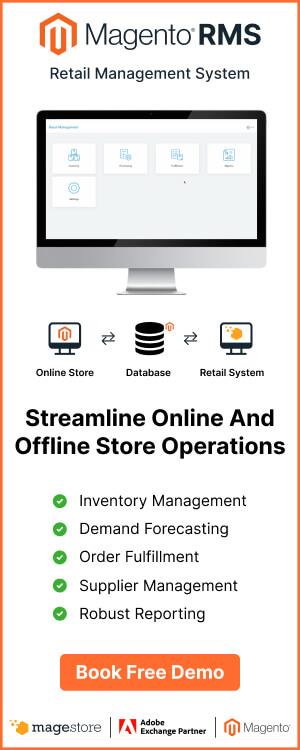Retail distribution is the strategy that most businesses use to sell their products to potential customers for more revenue. How many sales you make depends heavily on how effective your distribution is. Normally, a flourishing company often knows what distribution channel to pour resources into and what strategy to employ to achieve their ultimate business goals.
Nike exemplifies how a globally famous brand can strategically employ a multi-channel approach to distribution. The brand distributes their products through wholesalers, retailers, and direct-to-customer (D2C) stores. Compared to the others, the D2C accounts for over 43% of Nike’s total revenue in 2023, contributing considerably to the steady growth of the brand over the years.
To help your business fly high, now let’s define retail distribution and learn more about common distribution channels, strategies, and best practices.
What is retail distribution?
Retail distribution is the process of moving products from manufacturers or producers to the final customers for consumption or use.
Distribution in retail involves different individuals and organizations, including producers, retailers, and wholesalers. Many entities join hands to deliver goods to the end consumers efficiently using suitable distribution strategies.
4 Retail distribution channels
Depending on your role in the supply chain, you can utilize an array of distribution channels to extend the reach of your products and increase sales. Let’s take a look at the most common ones below.

Direct to consumer
Manufacturers or producers can sell their products directly to the final buyers via brick-and-mortar or eCommerce stores. Without any intermediaries involved, this channel gives producers complete control of their distribution activities and customer experience. Besides, it enables businesses to lower costs for higher profits and increase customer trust.
Directly distributing products to customers also means companies must build and run their own sales teams, online facilities, and consumer marketing infrastructure to market and sell the products. This retail distribution channel also makes it more difficult for businesses to widen their reach across geographical areas and market segments.
Uniqlo, a popular clothing brand from Japan, is a typical case study for the use of direct-to-consumer channels. The company manufactures their clothes and sells them directly to customers via their online websites and offline stores in different countries like the U.S., Canada, Australia, France, and Vietnam.
Retailers
Outside of directly selling to customers, companies can establish relationships with other retail stores to sell their items. Retailers like supermarkets, department stores, or specialty stores can purchase products from manufacturers or other intermediaries and deliver them to the end consumers through their physical shops and websites.
Producers or manufacturers can avail themselves of the retailers’ large customer base to generate brand awareness for new product lines. They also often team up with retailers to implement effective marketing strategies, from product placement to sales promotions to appeal to more customers, thus boosting sales.
Speaking of retailers, Walmart is one of the most prominent names. Founded in 1962, the U.S. retailer operates chains of supercenters, department and discount stores to offer the customers a wide variety of products from abundant brands in grocery, electronics, home furniture, appliances, clothing, accessories, and more like Reynolds, Samsung, Reebok, and GAP Home.
Wholesalers
Wholesalers act as a conduit between manufacturers and retailers. They mostly buy goods from manufacturers or distributors, then typically resell them to retail stores in large quantities at lower prices to earn a profit. In some cases, wholesalers sell directly to the masses through their warehouses and online stores.
As a popular retail distribution channel, wholesalers significantly benefit both manufacturers and customers. This channel helps manufacturing companies reach more customers without additional costs for lease or payroll, reduce warehousing fees, and update market information. Besides, wholesalers also offer product assortments that suit customers’ needs and help them save considerably.
Sysco is a famous American company that wholesales products like fresh produce, seafood, meat, and imported foods, together with food service equipment and supplies. The company purchases products from their network of growers, ranchers, and producers, and distributes them to restaurants, educational or healthcare facilities, and other establishments.
Distributors
Retail distributors represent businesses authorized to sell a manufacturer’s products to wholesalers or retailers. Taking on the role of sales representatives, distributors focus on executing promotional activities to boost sales and managing distribution logistics on behalf of the manufacturer.
A manufacturer can partner with distributors in different locations and leverage their existing retail networks to expand the market coverage to potential customers. Moreover, having a retail distribution center near your target customers accelerates delivery and decreases transportation costs. These supply chain entities also minimize the storing fees of the manufacturer as they often store products themselves.
MSC Industrial Supply is a distributor specializing in providing their customers with a wide range of metalworking and industrial products like saw blades, threading, safety glasses, and hand tools. MSC sources their products from leading manufacturers for resale and offers additional services, including on-site support and vendor-managed inventory.
How to choose the right retail distribution channels
Choosing distribution channels for your business matters as they affect different aspects of your business like pricing and promotions. Whatever channels you choose, it’s worth looking into the following factors beforehand.

Target markets
It’s critical to define your target markets with details like preferences, behaviors, and locations before choosing the retail channels of distribution. By understanding clearly how and where your target customers prefer to purchase, you can choose the best channels that allow you to access your target segments easily and serve them well.
For instance, if you just want to zero in on a small segment of consumers who concentrate on specific locations, focused and direct channels should be your choice. In contrast, a large and diverse customer base market requires distribution channels that can access more varied consumers across multiple locations like wholesalers or retailers.
Product types
The characteristics of your products like perishability, size, weight, and fragility determine which store distribution channels you should take.
For example, fresh produce like vegetables and meat needs to reach customers quickly, so direct channels are the way to go as they reduce delays and handling while ensuring product quality and freshness. In the same way, it’s also better to use a short distribution channel to transport bulky and fragile items to minimize damage.
On the other hand, merchandise like apparel and clothing might better employ retailers as these often provide broader product assortments for customers with extra services, thus increasing sales opportunities.
Warehouse and logistics capabilities
Your internal capabilities to store inventory, fulfill orders, and manage your supply chain help you define which tasks to process in house and those that need support from external parties. On that basis, you can evaluate what values different retail marketing channels might bring to your business.
For example, adopting direct-to-customer channels means you have to handle the logistics of distribution yourself, from stocking sufficient inventory to managing the transportation of products to customers. On the contrary, channels such as retailers can share the storage burden with your business while assisting you with fast delivery to customers.
3 types of retail distribution strategies
There are 3 types of distribution strategies at your disposal, which are intensive, selective, and exclusive distribution.

Intensive distribution
The intensive distribution strategy prioritizes the maximum exposure of your products to every potential customer wherever they want them. This approach aims to engulf the market with your products using all available retail channels, which means displaying them in as many retail locations as possible, thus improving brand awareness and attracting new customers.
This retail distribution strategy is ideal for inexpensive and frequently purchased products like soap, toothpaste, toilet paper, or other consumer goods. With these products, buyers possibly don’t mind trying a new brand in case their preferred items are not available.
For example, the Coca-Cola Company uses intensive distribution to sell Cokes in many outlets, like supermarkets, vending machines, or convenience stores. This strategy makes Cokes present almost everywhere and customers can easily buy them whenever they need.
Pros | Cons |
|
|
Selective distribution
Businesses using a selective distribution strategy only pick a handful of distributors and retailers to sell their products based on pre-set criteria like locations and service capabilities. Selective distribution works best for products targeting specific customer segments who have no trouble shopping around to get their preferred items.
Selective distribution in retail enables you to work closely with your distributors to better manage customer experience, improve selling efforts, and enhance your brand image. Some brands in consumer electronics, furniture, and home appliances are using this strategy to access more customers for improved sales.
For instance, Sony puts their TVs on sale in several specialty outlets like Walmart, Best Buy, and Circuit City. If a person wants to buy a Sony TV, he or she’ll need to reach these stores to get their desired item.
Pros | Cons |
|
|
Exclusive distribution
Exclusive distribution is dominant in the luxury sector where brands wish to maintain a sense of exclusivity for their high-end products. This strategy limits the number of distribution channels involved in delivering their products to the customers. Only a few distributors or retailers can exclusively sell these products in certain areas or these items are only accessible in the suppliers’ own physical or online stores.
The exclusive distribution strategy attempts to reach customers who are willing to pay high prices to get upscale items. Using this store distribution method allows you to closely supervise the sales process to ensure top-notch customer services and increase revenue margins while maintaining your distinctive positioning.
A case in point of exclusive distribution is how Chanel distributes their products. Chanel’s products are exclusively sold in their boutiques and high-end stores in large cities like New York, Boston, or Tokyo.
Pros | Cons |
|
|
How to choose the right retail distribution strategy
Opting for a workable distribution strategy is of decisive importance as it can help you attain your business goals and get ahead of your competitors. Therefore, make sure you make the following considerations before choosing the one that best suits your business needs.

Consider your products
Each product type suits a different distribution strategy. You should consider the consumption frequency and prices of your products to pick the most suitable approach.
In particular, if your products have low prices and are purchased routinely by most users, then intensive distribution should work well. For more specialized products with moderate prices that need additional consideration before purchasing like shoes or appliances, selective distribution is the most suitable method. The best solution to high-priced products that need lots of thought and comparison before buying like cars or luxurious bags is the exclusive distribution strategy, which ensures your customers get the best customer services and consultancy.
Define your target customers
Understanding who your target customers are and how they regularly shop for your products is crucial in determining the best retail distribution strategy.
If you target the masses who buy your products anywhere at their convenience, you should go with intensive distribution. This strategy enhances your brand reach by leveraging the large customer base of intermediaries like retailers. If aiming at a narrower segment that often seeks prestigious places to purchase their desired items, your best bet is to utilize selective distribution to increase your brand credibility. Exclusive distribution will be the best option if you want to approach affluent customers who wish to possess upmarket products.
Analyze your business goals
What your business needs at present or in the near future is another factor worth considering. You’d better base your choice of retail distribution strategies on your goals so that the methods and channels you use can go a long way towards your final objectives. Defining clearly whether you’re trying to strengthen your brand awareness, increase profit margins, acquire new customers, or bolster customer loyalty sheds light on the method you should take.
For instance, while intensive distribution allows you to spread your name to a larger audience, selective distribution gives you more control over your sales process, and brand values, thus elevating customer experience and winning their loyalty.
3 tips to improve retail distribution
Below we suggest the most feasible ways to help you improve your retail distribution for greater efficiency and revenue. Let’s dive in!

Build strong relationships with suppliers and distributors
Developing good relationships with suppliers and distributors facilitates productive collaboration among distribution entities to deliver great value to the end buyers. Maintaining strong connections with suppliers is beneficial as it ensures an undisrupted supply of merchandise at favorable prices. That said, the procurement process becomes much easier, especially when you need to timely restock inventory or look for new products for more revenue.
Meanwhile, a network of distributors not only helps you carry your products but also supports marketing activities to attract customers and encourage sales. Close partnerships with distributors keep all sides informed of important changes and follow the shared guidelines to preserve brand values and deliver consistent customer experience.
Inventory and supply chain management
Having appropriate technologies in place to track orders, manage inventory, and oversee the distribution process helps optimize your strategy. At its core, the more effectively you manage your supply chain, the more successfully your retail distribution runs.
It’s ideal to choose the tech solutions that give you real-time updates on your product quantity across retail distribution centers and set up low-stock thresholds to inform timely replenishments. Besides, efficient tools can generate purchase orders based on demand forecasts and closely monitor all of your suppliers and purchasing activities centrally. Choosing suitable retail software helps streamline many processes and reduce manual work, thus improving distribution efficiency.
A comprehensive retail management software can become your right-hand man in operating an effective supply chain. It centralizes inventory, warehouse, and supplier management in one place. The tool helps you track your stocks in real time, oversee the entire inventory movement, from purchasing to sales, and manage all suppliers easily.
Data-driven decision making
It’s necessary to constantly audit and adjust your distribution strategy to keep up with market changes. Any decision to improve your plans should be grounded on up-to-date data from multiple sources. To facilitate the decision-making process, you can gather internal data from your functional POS systems or do some market research to define what needs altering.
For example, your POS can provide detailed information about your inventory, including what products sell well, what sits still in the warehouse, and the stock levels to guide inventory planning and restocking. In addition, you can track sales from different channels and shops to see where most revenue comes from and which channel needs more investment.
The POS data also gives you deep insights into customers’ buying habits and preferences. On that basis, you can tweak your distribution strategy and marketing activities to get more customers.
FAQs
What is a retail distributor?
A retail distributor is an entity that helps promote and distribute a manufacturer’s products to wholesalers and retailers in specific locations.
What is the retailer method of distribution?
The retailer method of distribution uses retailers as a distribution channel to reach potential customers for revenue increase.
What is an example of retailer distribution?
Gilette, a famous brand of personal care products for men like razors, shave gel, and deodorants, sells their products through retailers like convenience stores, supermarkets, and health care stores. Some major retailers selling Gilette’s items are Walmart, Walgreens, and Amazon, to name a few.
What do retailers do in distribution?
Retailers buy products from manufacturers or distributors and then resell them to the end consumers for profit. Moreover, retailers can also collaborate with producers to promote their products and provide additional services for shoppers.
What are the retail distribution levels?
Retail distribution levels are the number of intermediaries engaged in retail distribution channels to bring goods from manufacturers closer to the end customers. With that said, one-level retail distribution means the goods move from producers to the end customers only through retailers.















